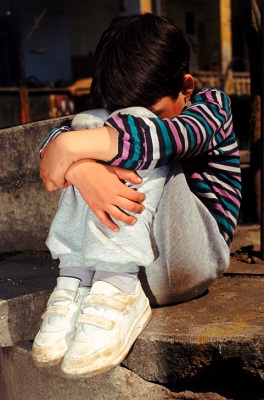Anxiety in Children
Posted by PLB · Leave a Comment

 Anxiety disorders are the most common mental illnesses among children and adolescents, and can be so constrictive that a child shrinks from contact with the outside world. There are three type of anxiety in children.
Anxiety disorders are the most common mental illnesses among children and adolescents, and can be so constrictive that a child shrinks from contact with the outside world. There are three type of anxiety in children.
1. Generalized Anxiety
Generalized anxiety in children causes them to worry extremely and unrealistically about everyday life activities, even about being on time. Typically, they are very self-conscious, feel tense, and have a strong need for reassurance.
Symptoms or behavioral patterns include-
- Unwarranted, excessive worry about school, appearance, status with friends, etc.
- Dread doing things wrong; perfectionistic; repeatedly re-do work
- Excessive seriousness, uptight, unsure feelings
- Hypersensitivity to criticism
2. Phobias
Children with phobias have unrealistic and excessive fears of certain situations or objects (e.g. animals, storms, water, heights, or situations, such as being in an enclosed space). Young people with social phobias are terrified of being criticized or judged harshly by others and try to avoid the objects and situations they fear to the point of restricting their activities.
Symptoms or behavioral patterns include-
- Severely shy and avoid social contact
- Acute shyness and discomfort in social situations
- Fear of being singled out, judged, evaluated, called on in class
- Phobic about specific situations (crowds, using public bathrooms)
3. Panic Disorder
Panic attacks, periods of intense fear accompanied by a pounding heartbeat, sweating, dizziness, nausea, or a feeling of imminent death, without an apparent cause are signs of a panic disorder. This experience is so overwhelming that people with panic attacks can live in dread of another attack.
Symptoms or behavioral patterns include-
- Worry that parents will die; clinging to and following parent in home
- Refusal to sleep alone
- Claims of sickness to avoid going to school
About one in every 25 children experiences separation anxiety disorder.
How do you handle children with anxiety in your classroom? Please do share your experiences.
From Professional Learning Board’s online continuing education course for teachers: Recognizing Early-Onset Mental Health Disorders in Children



